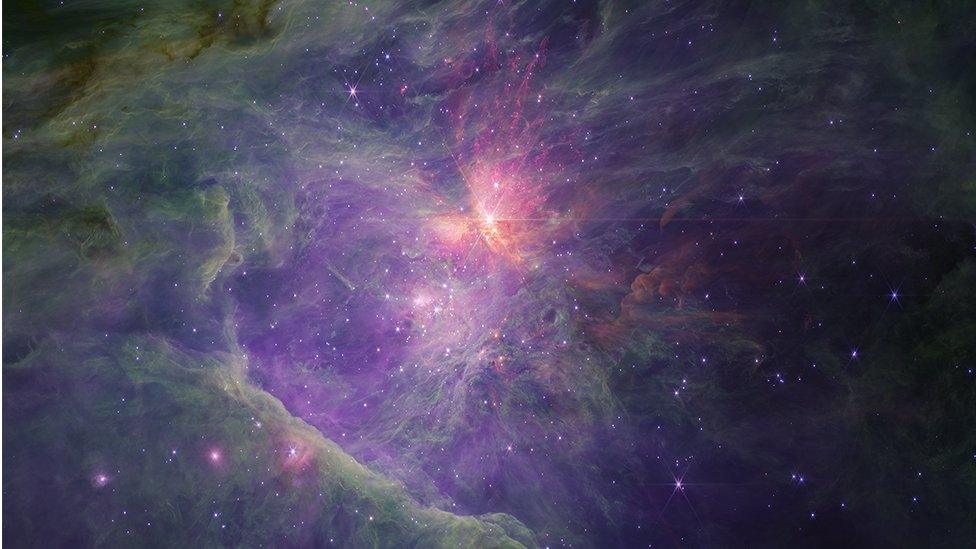James Webb: Space telescope captures floating planets that 'shouldn't exist'
- Published
- comments

Scientists have announced that the James Webb Space Telescope has discovered some unexpected planet-like objects that "shouldn't exist"!
Experts say they were spotted in the Orion Nebula - which is around 1,400 light years from Earth.
What's really surprised researchers is that the observations show about 40 pairs of the objects floating freely in space, with no stars nearby to orbit.
They say it's an important discovery as this goes against our understanding of how planets and stars are usually formed and behave.
The Orion Nebula planets - what have scientists found?

The Orion Nebula - also known as M42 - is one of the brightest nebulae in the night sky and is the nearest star-forming region to Earth.
It contains a number of bright suns at its centre called the Trapezium, and is visible to the naked eye as a faint smudge in the sky.
New images from the James Webb Space Telescope, taken over the course of a week, show the Orion Nebula in its clearest detail yet, and scientists say they're surprised with the observations its made.
The telescope discovered about 40 pairs of objects floating freely in the sky - each around the size of Jupiter.
As a result, they've been nicknamed Jupiter Mass Binary Objects or 'JuMBOs'.
Scientists aren't sure yet why the objects are floating in pairs, and also why they don't appear to be connected to any nearby stars.
Astronomers say one possibility is that the objects grew out of regions in the nebula, where the density of material wasn't big enough to make proper stars.
Another idea is that they were made around stars and then thrown out into interstellar space.
What is a nebula?
A nebula is a cloud of dust and gas, often utterly ginormous in size, spanning many light years.
Nebulae are just some of the ingredients of galaxies alongside stars, black holes, dark matter and much more.
